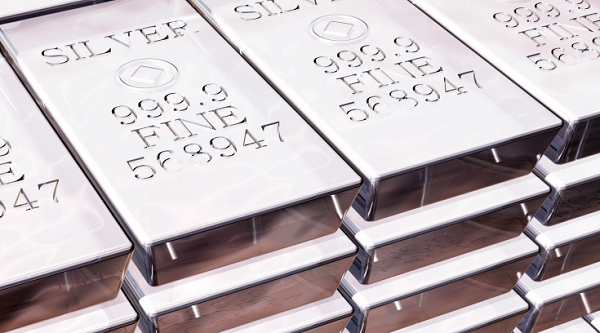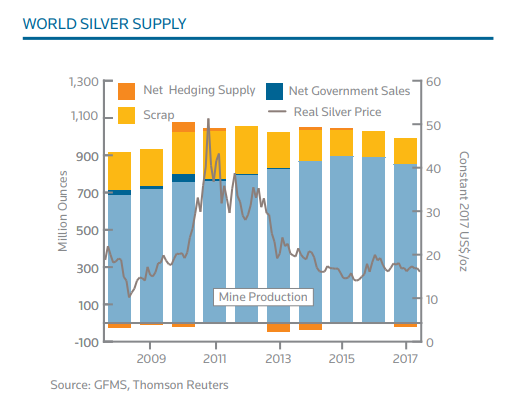
Source: schiffgold.com
Silver is primarily mined as a byproduct of copper, lead and zinc mining operations. Only about 1/3 of the silver is mined at an actual silver mine. Only 6 of the 20 top silver producing mines are silver mines. Many of these mines that are actual silver mines have reduced outputs because of the extent period that silver prices have been kept low, they initially mined the richer ore to maintain their cash flow but as time went on, they had to scale back their operations or some just closed the mine. The mines that produced silver as a byproduct, slowed their mining operations because of reduced demands for the metal that they were primarily mining.
Global silver mine production fell by 4.1% in 2017, this was the 2nd year of declining mine production. Supply from the primary silver mine fell by 9% and scrap silver supply also fell. For the supply from scrap, it has fallen for sex years in a row. All told, physical silver supply fell by 35.2 million ounces.

Source: schiffgold.com
Being that silver, unlike gold, has an industrial use the silver output doesn't just go to adding to the stockpile. The silver that is used for industry in effect is not recovered. A primary source of the industrial use of silver is for solar panels and the panels are still experiencing a growing demand. Another source of silver is to recover the metal from items which were made of silver like flatware and jewelry, they call this scrap silver. Much of the supply of scrap silver was sold for its melt value when silver was selling for almost $50 as people turned in their silver heirlooms for the cash.
Industrial demand for silver rose 4% or 599 million ounces last year. Solar panels were the primary source of the rising demand, worldwide solar panel installations increased by 24%. Electronic devices consumed 242.9 millions ounces of silver last year.
Although there was a strong increase in the silver demand for industry, demand for silver as an investment was weak. The demand for coins and bars fell from 205 million last year to 151.1 million this year. Some of this demand likely went into the cryptocurrency market and some went to the paper market. It is logical that investors put their money in the crypto market because of the soaring returns. As far as those investing in the paper market like slv, they will be surprised to find that they didn't actually purchase physical metal but a claim on physical metal.
This trend of decreasing mine output will put an increased strain on the market. It should cause the commercial to dump even more notional (paper contracts) silver on the market to effect a lower spot price.
